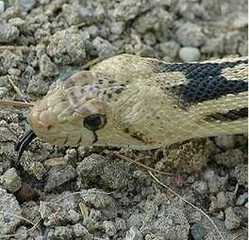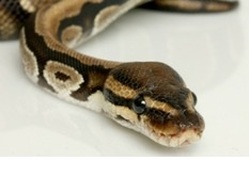Non-Venomous Snakes |

Custom Search
|
|
Non-Venomous Snakes are usually harmless to humans with the exception of large constrictor snakes like the Green Anaconda or the Burmese Python.
These snakes have teeth, just like venomous snakes so in the event of a bite from a non-venomous snake, as with any small injury care should be given to avoid infections. They kill their prey in various ways. Some snake species constrict their prey, some will press it to the ground or chew it to kill it and some just catch their victim and swallow their prey alive. Like we often see in the Hollywood snake movies, in real life constriction is not a bone breaking experience, the snake will strike and bite its prey, then coils around it and begin to squeeze. Then every time the prey exhales, the snake will squeeze even tighter until eventually, the animal will eventually die. In the past, it was believed that these snakes killed their prey by suffocating them. But more recent studies show that most of the times the constrictor's tight coils block the victim's blood flow, leading to a circulatory arrest and eventually death. As they don't produce venom, which their venomous cousins like the King Cobra can use to defend against predators, their defenses are variable, some will musk (defecate), some snakes will squirm wildly.
Other species like the scarlet kingsnake (Lampropeltis elapsoides) mimic more dangerous and highly venomous snakes in an attempt to bluff the predators. And of course most snakes will bite to defend themselves, venomous or not. A bite by the smaller species can hardly be felt and will not break the skin. Bites from the larger species like the Gopher Snake, Rat Snakes, and Coachwhip can be a painful experience, although not life threatening. Types of non-venomous snakes When considering non-venomous snakes most of them are referred to as clinically non-venomous. What this means is that they do not produce toxins that are clinically harmful to humans. Hence they are harmless to us, but many of these snakes, like Garter snakes, Rat snakes or Hognose snakes, for example, do indeed produce or store toxins that are regarded as venomous from a scientific or technical point of view. There other species of truly non-venomous snakes like boas, pythons, bull snake or kingsnakes like the California Kingsnake. |
Did You Know?
Although the olive python is non-venomous and harmless to humans, they are sometimes mistaken for other highly venomous snakes and needlessly killed. |
© 2014 Snake Facts About Us | Privacy Policy | Contact







